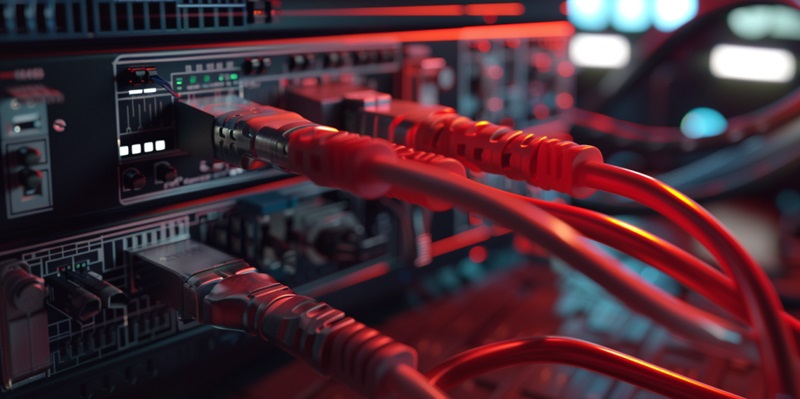The sprawling network of submarine cables that stretch across the world’s seabeds is a cornerstone of modern civilization. These underwater channels are crucial for the flow of information, underpinning global communications and the economic sector. A sudden break or failure in this infrastructure could have widespread consequences, upsetting economies and societies alike. With tensions on the rise worldwide, the importance of these cables is thrown into sharp relief, but it also spotlights the fragility of our reliance on them. Network Computing emphasizes this, prompting the crucial inquiry — does the planet have a contingency plan for a scenario where these aquatic arteries are compromised? The need for alternate methods to maintain our connected way of life in the absence of these cables is not just prudent; it is imperative.
The Vulnerability of Underwater Networks
Subsea cables are notoriously prone to interruptions, with potential perils lurking in the depths. Whether by the accidental drag of an anchor or purposeful geopolitical maneuverings, the cables’ susceptibility to disruption remains a lingering concern, especially in politically volatile regions. The Red Sea and the Mediterranean Sea, for instance, are maritime choke points where cable integrity is perennially at risk. Repairing these vital connections incurs substantial costs and poses logistical nightmares, especially if the damaged stretch lies in a disputed territory or an active conflict zone. This underscores a stark reality – our dependence on these undersea channels comes with inherent risks that might not be sustainable in an era of increasing global unrest.
Rising Interest in Satellite Solutions
Satellite communication, once considered impractical due to high costs and latency issues, is experiencing a resurgence with the advent of LEO and MEO satellite networks. These advanced orbital configurations are poised to drastically reduce delays, moving closer to the rapid transfer rates of underwater cables. In an innovative step, CMC Networks is tapping into LEO and MEO satellite services to maintain uninterrupted internet connectivity in regions like Africa and the Middle East that frequently face infrastructure disruptions. This strategic shift indicates the industry’s broader willingness to embrace space-based solutions to circumvent the shortcomings of terrestrial and subsea networks. With this transition, CMC Networks is at the forefront of leveraging the latest advancements in satellite technology to provide reliable, efficient communication alternatives where traditional methods fall short. This could mark a pivotal change in how remote areas stay connected in the face of infrastructural challenges.
Terrestrial Cables as Contenders
Despite the allure of the skies, terrestrial cables are planting firm roots as viable contenders too. Stretching cables over land faces its own set of formidable challenges. Regulatory hurdles sprawl across international boundaries like an intricate tapestry of red tape. The physical act of laying cables is labor-intensive and complex, adding to the appeal of uninterrupted subsea routes. Nevertheless, interest in terrestrial infrastructure is swelling, particularly in Asia, where the burgeoning internet usage of giants like China and India beckons for low-latency, land-based solutions. This interest signals a commitment to exploring every possible avenue in bolstering global internet infrastructure.
The Continuing Importance of Subsea Cables
The crucial role of subsea cables in international data exchange remains unchallenged, as they are the backbone of global connectivity. Advancements in technology have not only increased their capacity but also reduced latency issues, affirming their indispensability. Experts like Jason Carolan, of Flexential, assert the unique value of these undersea conduits. As the need for robust internet traffic grows, so does the reliance on these cables. Ensuring diversity in routing is becoming increasingly important to counter the threats posed by global political uncertainties. The international community is united in its endeavor to maintain the resilience and constancy of these submarine networks. The future of global data traffic is inextricably linked to the evolution and preservation of subsea cables. Their expansion is as inevitable as it is imperative for the sustained growth of internet connectivity across continents.
Integration for Resilience
The conversation about global connectivity highlights a multi-pronged approach, where satellites and land networks complement rather than replace the deep-sea cables crisscrossing our oceans. In the face of environmental unpredictability and shifting geopolitics, this integrated network becomes a beacon of resilience, combining the steadfast nature of underwater cables with the versatility of aerial and terrestrial connections.
As we move forward, there’s no wholesale shift from the submerged data highways that have long been the spine of our internet. Instead, the global community is preparing a sophisticated blueprint for keeping the world connected, one that appreciates the value of multiple, redundant pathways to ensure uninterrupted communication. This mesh of connectivity options represents a commitment to an adaptive and robust global communications infrastructure.

